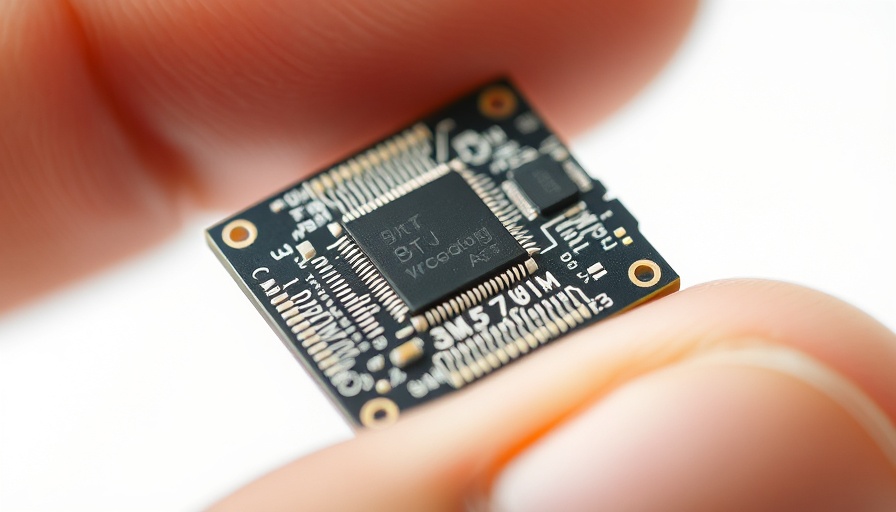
A Tiny Chip with Big Promises for Science and Medicine
Imagine holding the key to groundbreaking scientific discoveries in the palm of your hand. A recent breakthrough at the University of Colorado Denver introduces a quantum device the size of a thumb that could redefine our understanding of the universe. This tiny chip generates extreme electromagnetic fields, which were previously only achievable in massive particle colliders, and has the potential to create gamma ray lasers capable of targeting cancer cells without harming healthy tissue. The implications for both fundamental science and medical applications are astronomical.
Revolutionizing Cancer Treatment with Gamma Ray Lasers
Cancer treatment stands on the brink of transformation with the development of these gamma ray lasers. Current treatments often come with severe side effects because they indiscriminately affect both cancerous and healthy cells. However, this new technology promises precision, aiming at eradicating only the malignant cells. By harnessing the power of a silicon-based chip, scientists can produce lasers that operate at an atomic level, offering a highly targeted approach that minimizes collateral damage. This could change the lives of millions around the globe, presenting a more humane way to combat this formidable disease.
Seeking Answers: Is the Multiverse Real?
Beyond its medical implications, Sahai’s discovery could help validate some of the most intriguing theories in physics, including the multiverse concept proposed by Stephen Hawking. The chip's ability to generate the extreme conditions required for high-level experiments means that researchers could explore the fabric of reality itself. With the capability that once required colossal machines like the Large Hadron Collider, scientists can now answer fundamental questions about our universe's nature more efficiently, eliminating the need for massive infrastructures that consume tremendous resources.
How the Technology Works
At the heart of this innovation is the ability to create intense electromagnetic fields. Sahai's silicon-based chip allows electrons to vibrate and bounce at astonishing speeds, producing fields strong enough for complex experiments. Traditional methods have relied on extensive particle colliders that are not only expensive but also physically enormous, extending miles in length. In stark contrast, this thumb-sized miracle is an embodiment of efficiency that could pave the way for more accessible scientific exploration.
A Leap into the Future: Implications and Opportunities
The potential applications of this tiny technological marvel extend far beyond what we can currently conceive. The convergence of quantum computing and nanotechnology is anticipated to unlock new frontiers in various fields. Imagine applications in materials science, energy production, and even computing capabilities that far exceed current technology limits. By integrating this chip into future devices, we might see revolutionary shifts not only in medical practices but also in how we approach complex scientific problems.
Expert Insights: What the Community is Saying
The excitement surrounding Sahai's chip has ignited discussions in the scientific community. As Dr. Ellen Carter, a physicist specialized in quantum technology, stated, “This could mark a paradigm shift in how we explore not just the microcosm of particles but the macrocosm of the universe. The applicability of such technology is profound and could lead to breakthroughs we haven’t even begun to imagine.” Indeed, the doors this technology opens could influence decades of research and application in physics and medicine.
The Road Ahead: Challenges and Considerations
While the promise of this technology is thrilling, it also raises important ethical considerations. As we move towards powerful new tools for manipulating physical and biological realities, how do we ensure they are used responsibly? Engaging policymakers and ethicists alongside scientists will be essential in establishing guidelines that govern the use and access to such powerful technologies.
Final Thoughts: A World of Possibilities Awaits
As we stand on the cusp of this new quantum era, it is crucial to recognize both the incredible opportunities and the accompanying responsibilities that arise. The development of this tiny chip is not merely a scientific achievement; it symbolizes the future where the boundaries of our current understanding—of illness, of the universe—are continually tested and expanded. Whether it ultimately leads to cures for diseases or to a deeper understanding of the cosmos, this innovation underscores our insatiable quest for knowledge and betterment.
 Add Row
Add Row  Add
Add 




Write A Comment